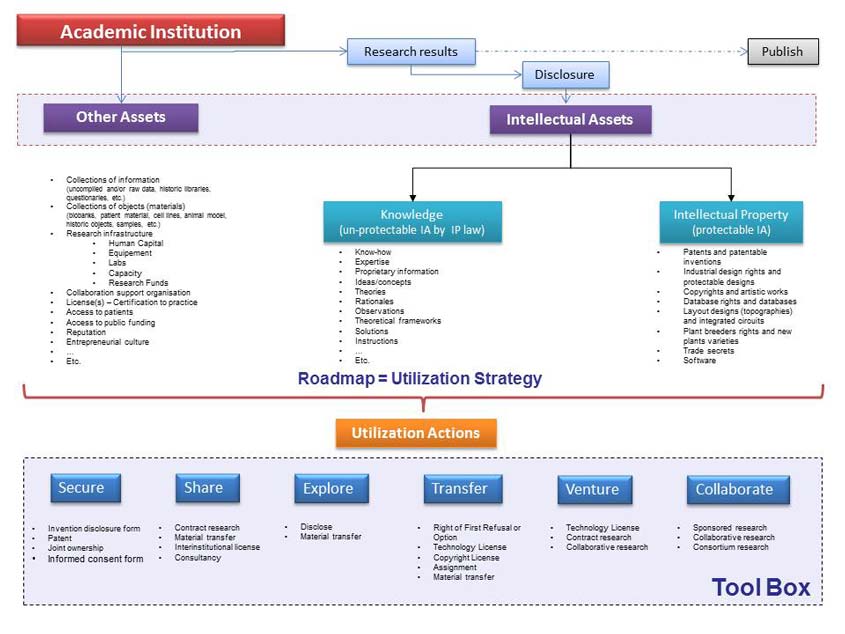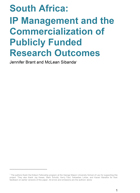IP is not an asset by virtue of its mere existence, as the number of patents is not a measure of an organization's innovation potential. Strategic IPR management by qualified professionals is needed to enable the protected invention to generate income and other benefits at the end of the technology transfer and IP commercialization process.
The management of IPR is not a linear process, but it may be considered as a set of strategic processes that includes the following steps:
- Identifying potential assets created or acquired by the organization – invention, new technology, formula, code;
- Evaluation of the technical, legal and market advantages of the potential asset;
- Decision making on the available forms of protection , including registered protection (e.g. patents, trademarks, registered designs) and/or unregistered protection (e.g. trade secrets, copyright, circuit layout, database rights);
- Determining marketing and technology transfer strategy - whether IP assets will be used internally, commercialized by the organization - assignment or licensing, transferred to a third party or spin-off, or offered to the public for free;
- Identification of the best partners - in accordance with the business goal and socially responsible policy of the organization.
IPR management in academic institutions includes not only the actions necessary to transfer technology from inventors to public and private users, but also the necessary steps before the actual transfer (research management or "technology intelligence") and afterwards (technology portfolio management, i.e. auditing, patent prosecution, quality assurance, contract management after signing, human resource management, etc.). As such, IPR management is one of the important prerequisites for a successful technology transfer and sustainability of the impact of research outcomes on the society.
The legal framework for IPR management policies in academic institutions has four levels: international, national, institutional and professional associations-related levels. Moreover, due to complexity of IPR management process in academic institutions, clear IP management principles and guidelines are necessary to ensure the most effective outcome.


